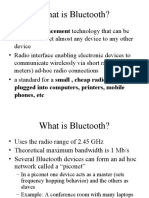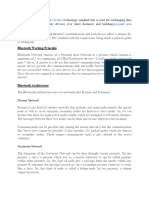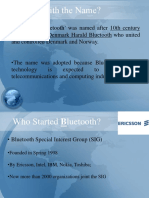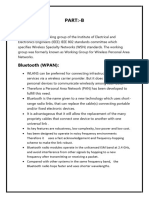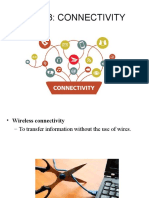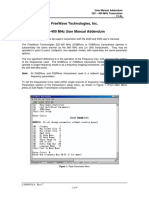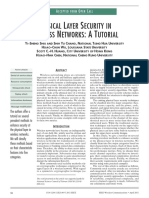0% found this document useful (0 votes)
173 views3 pagesBluetooth
Bluetooth is a wireless technology standard for exchanging data over short distances using short-wavelength UHF radio waves. It allows up to 8 devices to connect in a piconet, with 1 master device and up to 7 slave devices. Bluetooth devices can communicate within a 10 meter range at speeds of up to 3 Mbps. A piconet is a basic Bluetooth network with 1 master and multiple slaves, while multiple interconnected piconets form a scatternet.
Uploaded by
liyomCopyright
© © All Rights Reserved
We take content rights seriously. If you suspect this is your content, claim it here.
Available Formats
Download as PDF, TXT or read online on Scribd
0% found this document useful (0 votes)
173 views3 pagesBluetooth
Bluetooth is a wireless technology standard for exchanging data over short distances using short-wavelength UHF radio waves. It allows up to 8 devices to connect in a piconet, with 1 master device and up to 7 slave devices. Bluetooth devices can communicate within a 10 meter range at speeds of up to 3 Mbps. A piconet is a basic Bluetooth network with 1 master and multiple slaves, while multiple interconnected piconets form a scatternet.
Uploaded by
liyomCopyright
© © All Rights Reserved
We take content rights seriously. If you suspect this is your content, claim it here.
Available Formats
Download as PDF, TXT or read online on Scribd
/ 3
